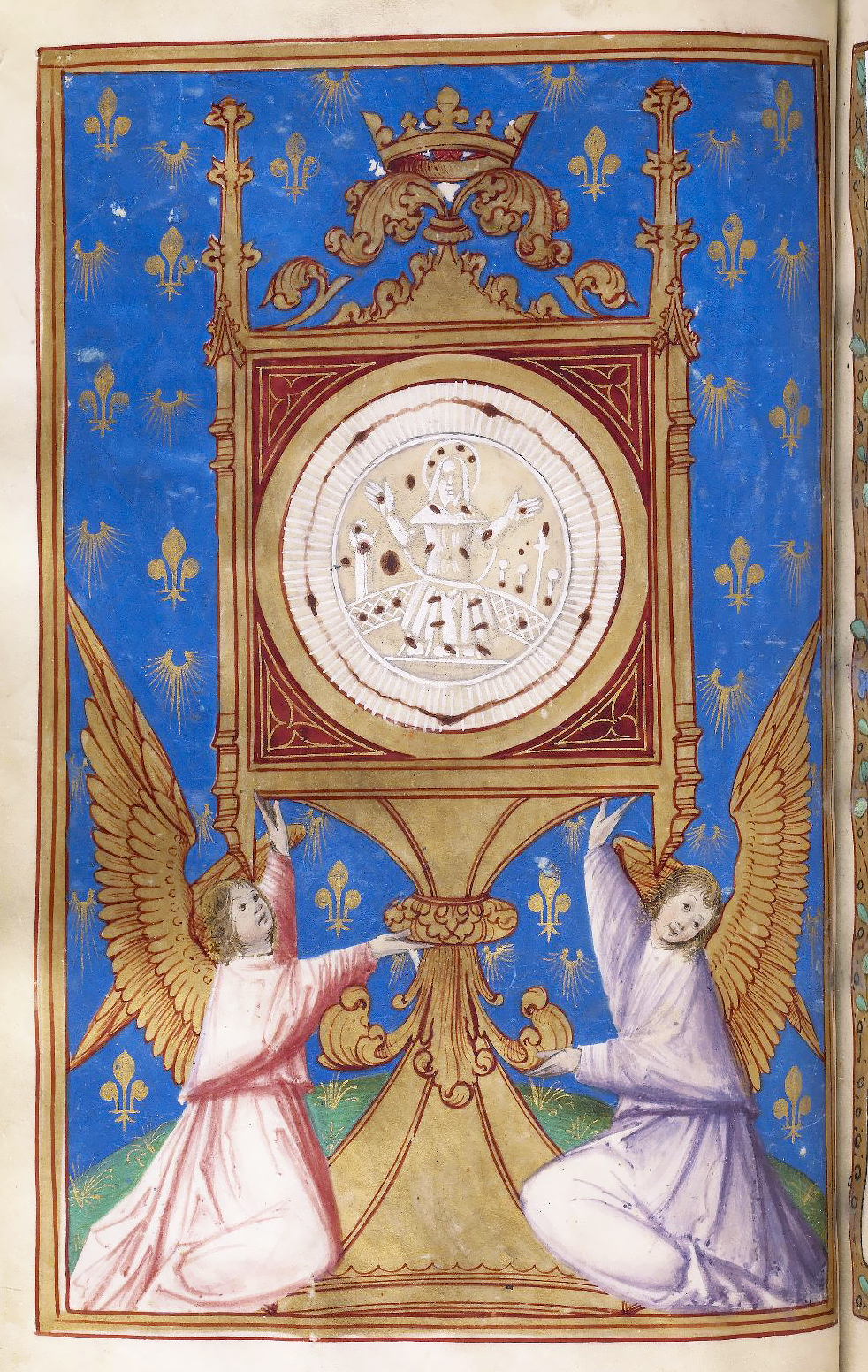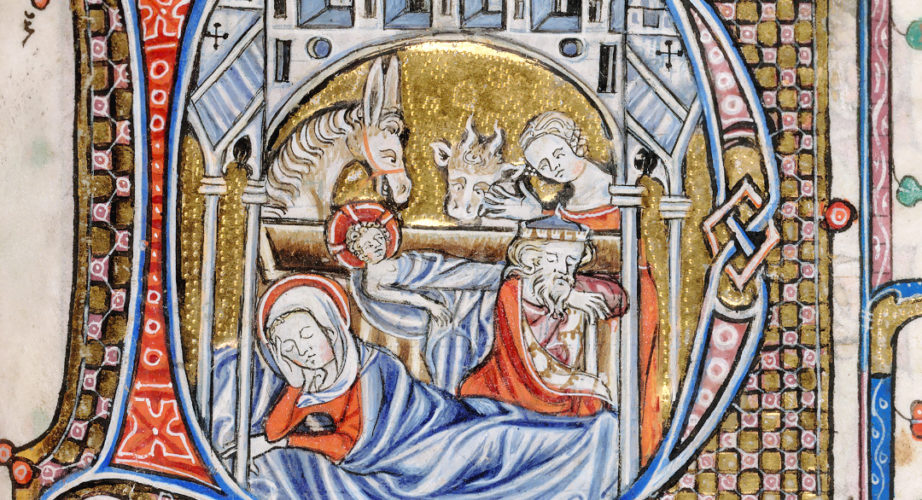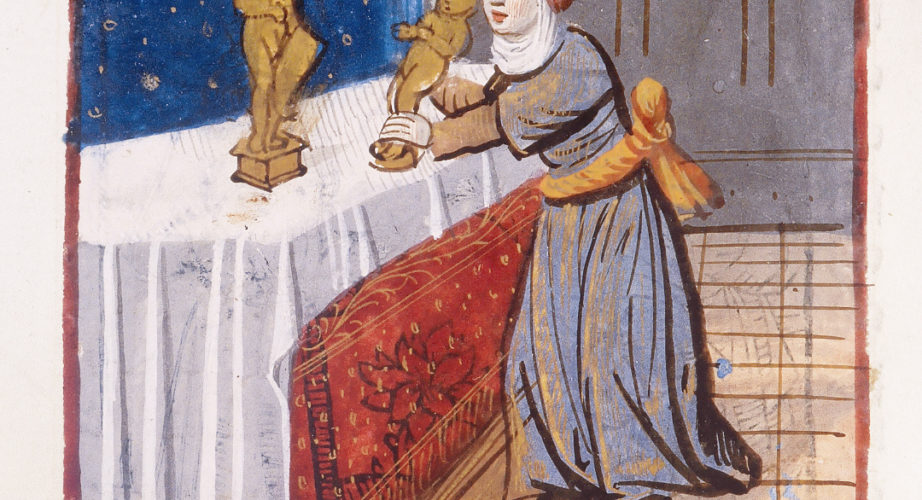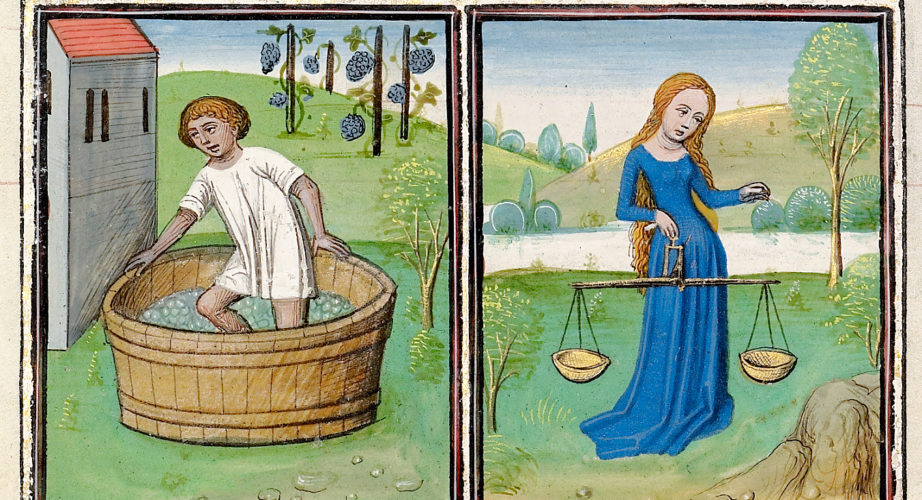Corpus Christi

The Catholic Church celebrates today the solemnity of the Corpus Christi (or Corpus Domini), a feast celebrating the real presence of Jesus Christ in the sacrament of the Eucharist. According to the Catholic doctrine, in fact, the presence of Jesus in the Holy Communion is considered to be real and substantial - and not just symbolical or metaphorical, as many thinkers and Protestant Churches have often argued: during each Mass, in fact, the consecration of the host by the hands of ministrant would trigger the miracle of transubstantiation (from the Latin "trans-substantiam", "beyond substance"), thus actually turning the consecrated wine and bread into the blood and body of Christ.
The presence of Jesus in the Holy Communion is at the very base of many Eucharistic miracles, phenomena in which a consecrated host suddenly starts bleeding. An example of Eucharistic miracle is the Bleeding Host of Dijon, depicted in the illumination above as well as in several other manuscripts. According to tradition, the miracle would date back to 1430, when a woman living in Monaco received a stolen monstrance still containing the sacred host. As she tried to remove the host with the help of a knife, the wafer immediately started bleeding: when the blood had dried out, the host presented the imprinted image of Jesus sitting on a throne. Having learned about the miracle, Pope Eugene IV donated the host to Philip "the Good" of Borgogna, who ordered for a chapel to be built in Dijon for the wafer to be venerated. The devotion surrounding the host made so that the King of France himself decided to visit Dijon in 1505: it was on this occasion that, supposedly having received a miraculous healing thanks to the host, King Louis XII donated his very crown to be placed atop the reliquary.
The Host of Dijon was preserved in the so-called Saint-Chapelle for a period of 350 years, after which it was moved to the church of Saint Michael in the same city. In February 1794, however, the winds of the Revolution caused the Dijon Commune to requisition the church and burn the sacred host.
"The Bleeding Host of Dijon", illumination from the "Hours of Ogier Bénigne", ms. W.291, f. 17v, ca. 1470-1480 (manuscript), 16th century (folio), The Walters Art Museum, Baltimore.
Two sleepy parents and a very awake Child... in a way, this Nativity…
On September 30, the Church celebrates the feast day of St. Rachel, Jacob's…
Da oggi (precisamente alle 8.50 italiane!), con l'ingresso del Sole nella costellazione della…


